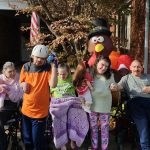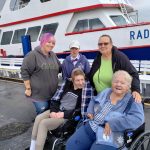Notice About Safety Program
It is with great regret that we make this notification. Due to the 3.5% reimbursement rate/funding cuts, CSCSO is suspending the Safety Award Program until funding improves. This program currently costs over $5000 a year to maintain. We will continue to provide the monthly safety topic, but will no longer be including the Safety Quiz. We are also suspending the monetary award for the Safety Hazards Incentive Program. However, please keep reporting these issues so they may be corrected and our clients protected. CSCSO will restore the program as soon as we can.
Heat-related deaths and illness are preventable, yet annually man people succumb to extreme heat. Following some simple guidelines can help avoid heat related illness and injury.
Stay Cool
- Stay in air-conditioned buildings as much as possible.
- Find an air-conditioned shelter.
- Do not rely on a fan as your primary cooling device.
- Avoid direct sunlight.
- Wear lightweight, light-colored clothing.
- Take cool showers of baths.
- Check on those most at-risk twice a day.
Stay Hydrated
- Drink more water than usual.
- DON’T WAIT until you’re thirsty to drink more fluids.
- Drink from two to four cups of water every hour while working or exercising outside.
- Avoid alcohol or liquids containing high amounts of sugar.
- Remind others to drink enough water.
Stay Informed
- Check local news for extreme heat alerts and safety tips.
- Learn the symptoms of heat illness.
Heat and People with Chronic Medical Conditions
- Drink more water than usual and don’t wait until you’re thirsty to drink.
- Check on a friend or neighbor, and have someone do the same for you.
- Check the local news for health and safety updates regularly.
- Don’t use the stove or oven to cook, it will make you and your house hotter.
- Wear loose, lightweight, light-colored clothing.
- Take cool showers or baths to cool down.
- Seek medical care immediately if you or someone you know experiences heat related illness.
Closely monitor people who depend on you for their care:
- Are they drinking enough water?
- Do they have access to air conditioning?
- Do they know how to keep cool?
Muscle cramping might be the first sign of heat-related illness, and it may lead to heat exhaustion or stroke. Here is how you can recognize heat exhaustion and heat stroke and what to do:
Heat Exhaustion
- Heavy sweating
- Weakness
- Cold, pale and clammy skin
- Fast, weak pulse
- Nausea or vomiting
- Fainting
What You Should Do
- Move to a cooler location.
- Lie down and loosen your clothing.
- Apply cool, wet cloths to as much of your body as possible.
- Sip water
- If you have vomited and it continues, seek medical attention immediately.
Heat Stroke
- High body temperature (above 103°F)
- Hot, red, dry or moist skin (lack of sweat)
- Throbbing headache
- Dizziness and light-headedness
- Rapid heartbeat which may be either strong or weak.
- Rapid, shallow breathing.
- Nausea and vomiting





